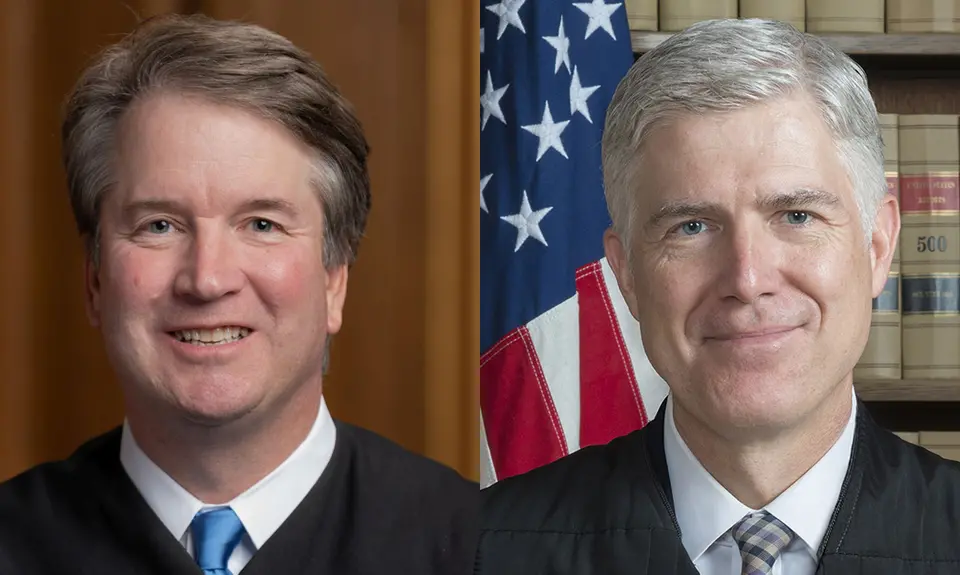“Confirmed Judges, Confirmed Fears” is a blog series documenting the harmful impact of President Trump’s judges on Americans’ rights and liberties. Cases in the series can be found by issue and by judge at this link.
In the June 2020 ruling in June Medical Services v. Russo, Trump Supreme Court justices Neil Gorsuch and Brett Kavanaugh came only one vote away from having a majority to uphold a Louisiana TRAP (targeted regulation of abortion providers) law even though it was identical to one in Texas struck down as unconstitutional in 2016’s Whole Woman’s Health v. Hellerstedt. Gorsuch and Kavanaugh not only voted to negate the protections recognized in that case, they also invited anti-abortion advocates to file challenges to the Planned Parenthood v. Casey precedent that is crucial to protecting the constitutional right to abortion.
Although the result was 5-4 to strike down the law, only the Court’s four moderates correctly framed the case and recognized it as a clearly unconstitutional infringement on the right to abortion. Justice Stephen Breyer’s plurality opinion reinforced the requirement that lower courts independently review the legislative findings given to justify an abortion-related law, and that they weigh the law’s claimed benefits against the burdens it imposes on abortion access.
The fifth vote was provided by Chief Justice John Roberts, who had dissented in the 2016 case, but who now recognized it as precedent that controls disposition of this case. He wrote that because the trial court’s factual record found that the burdens of the Louisiana law were the same as with the Texas law, courts should treat the laws the same and strike down the newer one.
It is worth noting that Roberts is frequently willing to overrule precedent he disagrees with. Perhaps he was not willing to do so this time because the Fifth Circuit’s reversal of the district court had been such a blatant defiance of the Supreme Court. No one should believe that abortion rights are secure from attack in the future by the chief justice.
Not surprisingly, Trump’s justices dissented. Gorsuch and Kavanaugh (along with Justice Clarence Thomas, who also wrote a separate dissent of his own) joined the dissent of Justice Samuel Alito and agreed that “Whole Woman’s Health should be overruled.” They conceded that Casey should be followed, but only until it is “reexamined,” which “Louisiana has not asked us to do.” As he has done before, Alito appeared to be inviting activists to initiate litigation that will give him and his fellow arch-conservatives an opportunity to overrule precedents they do not like. Gorsuch and Kavanaugh joined him in issuing this invitation.
In addition, each wrote their own dissent. Gorsuch wrote that the Court should have accepted Louisiana’s assertions that the TRAP law was necessary to protect health. He compared it to laws regulating colonoscopies and steroid injections. But those do not implicate constitutional rights requiring judicial protection, nor do they have a history of opponents seeking to eliminate those procedures and to devising pretexts to accomplish that goal.
In Kavanaugh’s dissent, the second Trump justice wrote that additional factfinding was needed to determine the likely impact of the law. He had made the same claim when arguing that the law should be allowed to go into effect during the litigation. But his dissent then relied on ignoring the facts.
The district court judge had held a six-day trial and issued a 116-page decision entering a permanent injunction against the law, based on extensive factual findings. The court specifically found that as a result of the law, there would be only “one provider and one clinic” in the entire state that could perform abortions, as opposed to six doctors and five clinics before the law was passed. The court concluded that 70 percent of Louisiana women choosing to seek abortion care would be unable to obtain one in the state. The court also found that the hospital privileges requirement would produce no medical benefit, and would thus not further the state’s interest in women’s health, but instead would increase delays and health risks to anyone seeking an abortion in Louisiana, as well as substantially burdening their right to reproductive choice.
Today’s dissenters find this record inconvenient, so they would brush it away. Indeed, that is exactly what the Trump judges on the Fifth Circuit did when they overruled the district court.
Gorsuch and Kavanaugh’s positions in June Medical come as no surprise to anyone familiar with their records. They are doing exactly what President Trump and the Republican Senate majority put them on the Court to do.
